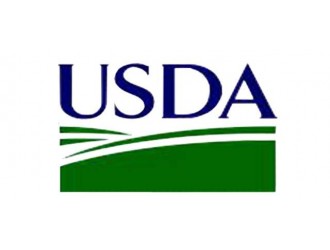гҖҖгҖҖйғЁеҲҶеҺҹж–ҮжҠҘйҒ“еҰӮдёӢпјҷь/div>
гҖҖгҖҖIn accordance with Article 6 of Regulation (EC) No 396/2005, the applicant BASF Italia Srl submitted a request to the competent natio
nal authority in Italy to set im
port tolerances for the active substance metiram in passion fruits/maracujas, bananas, pineapples and to modify the existing maximum residue level (MRL) in celeriacs on the basis of intended northern Europe (NEU) use. The data submitted in support of the request were found sufficient to derive MRL proposals for pineapples and passion fruits/maracujas; according to the data provided, the existing EU MRL in bananas did not require modification and the data were not sufficient to derive an MRL proposal for celeriacs. A co
nsumer exposure calculation, which co
nsidered o
nly metiram uses, indicated no longвҖҗterm co
nsumer intake concerns, but is affected by several uncertainties related to the lack of residue data reflecting the existing uses of metiram. A second exposure scenario in which the lack of information was overcome by co
nservative assumptions indicated potential chro
nic exposure co
ncerns for a number of diets. The co
ntribution of residues in the crops under co
nsideration to the longвҖҗterm co
nsumer exposure is low. The co
nsumer exposure to ethylenethiourea (ETU) residues from the existing and intended metiram uses indicated no co
nsumer intake concerns. However, the risk assessment is affected by a number of uncertainties that could not be addressed with the currently available data. EFSA therefore proposed that a comprehensive co
nsumer exposure to ETU residues is performed in the f
ramework of Article 12 MRL review, co
nsidering the existing uses of dithiocarbamates that are known to degrade to ETU in processed products. Co
nsidering the inco
nclusive results and overall uncertainties in the risk assessment, EFSA is of the opinion that further risk management discussions are required whether a modification of existing dithiocarbamate MRLs is justified prior to the finalisation of the MRL review on metiram and other dithiocarbamates.
гҖҖгҖҖ
жң¬ж–Үз”ұйЈҹе“ҒдјҷдјҙзҪ‘йЈҹе“Ғиө„и®Ҝдёӯеҝғзј–иҫ‘пјҢдҫӣзҪ‘еҸӢеҸӮиҖғпјҢж¬ўиҝҺиҪ¬иҪҪпјҢиҪ¬иҪҪиҜ·жіЁжҳҺеҮәеӨ„пјҒжңүд»»дҪ•з–‘й—®пјҢиҜ·иҒ”зі»news@www.sqrdapp.comгҖҒь/span>
зӣёе…іж”ҝзӯ–и§ЈиҜ»










 ең°еҢәпјҷь/font>
ең°еҢәпјҷь/font>


 欧зӣҹиҜ„дј°иҪ¬еҹәеӣ зҺүзұіMO
欧зӣҹиҜ„дј°иҪ¬еҹәеӣ зҺүзұіMO
 欧зӣҹиҜ„дј°дёҖз§ҚйәҰиҠҪзі–ж·Җ
欧зӣҹиҜ„дј°дёҖз§ҚйәҰиҠҪзі–ж·Җ зҫҺеӣҪжӢҹж’Өй”ҖиӢҘе№ІиӮүзұ»еҸүь/a>
зҫҺеӣҪжӢҹж’Өй”ҖиӢҘе№ІиӮүзұ»еҸүь/a> йІҒе…¬зҪ‘е®үеӨ 37060202000128еҸ¶ь/a>
йІҒе…¬зҪ‘е®үеӨ 37060202000128еҸ¶ь/a>



